Address
304 North Cardinal
St. Dorchester Center, MA 02124
Work Hours
Monday to Friday: 7AM - 7PM
Weekend: 10AM - 5PM
Address
304 North Cardinal
St. Dorchester Center, MA 02124
Work Hours
Monday to Friday: 7AM - 7PM
Weekend: 10AM - 5PM
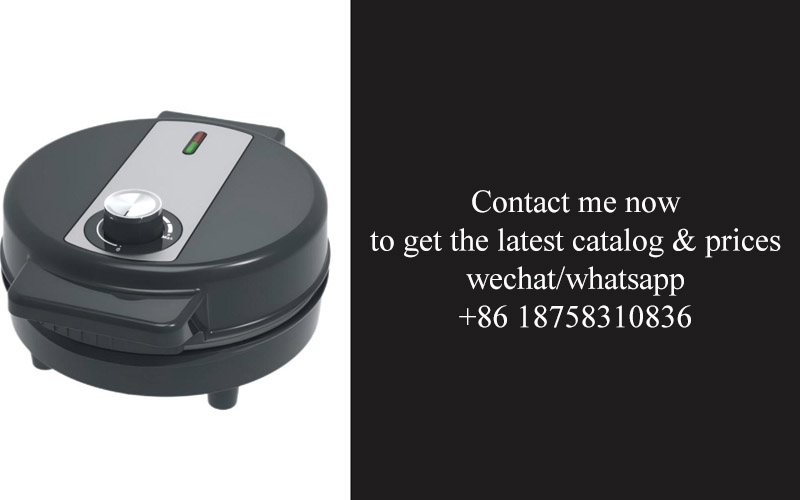
Grill manufacturing has long been a competitive field, with brands constantly seeking ways to stand out in a crowded market. One of the latest trends that has been reshaping the industry is the shift towards in-house mold making. This move has not only streamlined production processes but has also opened new avenues for innovation and customization. As we delve into the world of grill production, it becomes increasingly clear that in-house mold making is not just a trend—it’s a game-changer for the future of grill brands.
In the ever-evolving world of kitchen appliances, the art of grill manufacturing has seen a significant transformation. One of the most notable shifts has been the increasing trend of in-house mold making. This shift isn’t just a fleeting trend; it’s a strategic move that’s reshaping the grill industry. Let’s delve into why this rise is happening and what it means for the future of grill manufacturing.
Grill manufacturers have long relied on external mold suppliers to produce the intricate components that make up their products. However, the demand for faster turnaround times, greater customization, and higher quality control has pushed many companies to bring mold making in-house. This move allows for a more agile production process, quicker response to market demands, and a direct influence on the quality of the final product.
The rise of in-house mold making can be attributed to several key factors. First and foremost, it’s about speed. In the competitive grill market, being able to quickly adapt to new designs or market trends is crucial. In-house mold making reduces the time it takes to produce new molds, enabling manufacturers to bring new grill models to market faster than ever before.
Secondly, customization plays a pivotal role. Consumers today are not just looking for a generic grill; they want something that fits their unique needs and preferences. In-house mold making allows for the creation of custom molds that can produce grills with specific features, such as different shapes, sizes, or even unique attachments. This level of customization was once a luxury but is now becoming more accessible to a broader market.
Quality control is another driving force behind the in-house mold making trend. When manufacturers produce their own molds, they have greater oversight and control over the entire production process. This means they can ensure that every grill component meets the highest standards of quality, reducing the likelihood of defects and improving customer satisfaction.
The efficiency gains from in-house mold making are hard to overlook. By eliminating the need to outsource mold production, companies can streamline their supply chain and reduce costs. It also allows for more efficient use of materials, as manufacturers can optimize the design and production of molds to minimize waste.
Moreover, the rise of in-house mold making is not just a domestic phenomenon; it’s also becoming more prevalent in international markets. As grill brands expand globally, the need for localized production and customization becomes even more critical. In-house mold making enables these brands to cater to regional preferences and market demands with greater ease.
There are, of course, challenges associated with in-house mold making. The initial investment in equipment and skilled personnel can be significant. Additionally, maintaining the expertise and technology required for mold making can be a continuous endeavor. However, for many grill manufacturers, the benefits outweigh these challenges.
Several grill brands have already seen success by embracing in-house mold making. These companies have reported reduced lead times, improved product quality, and increased customer satisfaction. The ability to quickly iterate on designs and respond to market feedback has given them a competitive edge in a rapidly changing industry.
Looking ahead, the future of grill manufacturing seems to be closely tied to the continued growth of in-house mold making. As technology advances and the demand for personalized products increases, the role of in-house mold making will likely become even more integral to the grill industry. Innovations in 3D printing and other advanced manufacturing techniques could further enhance the capabilities of in-house mold making, allowing for even more complex and customized grill designs.
In conclusion, the rise of in-house mold making in grill manufacturing is a testament to the industry’s adaptability and its commitment to meeting the evolving needs of consumers. By bringing the mold-making process in-house, grill manufacturers are not just producing grills; they are crafting experiences that resonate with customers around the world.

In the competitive landscape of grill manufacturing, the shift towards in-house mold making has become a pivotal strategy for brands aiming to stand out. This move is not just a trend but a strategic necessity that brings several critical advantages.
The ability to create custom molds in-house allows grill brands to push the boundaries of design and innovation. By having direct control over the mold-making process, companies can experiment with new shapes, sizes, and functionalities, leading to products that are not just aesthetically pleasing but also functionally superior.
One of the most significant benefits of in-house mold making is the agility it offers. Grill brands can respond swiftly to market demands and consumer preferences. For instance, if a new cooking trend emerges, the company can quickly adapt their grill designs to incorporate these features, ensuring they remain at the forefront of industry advancements.
Quality control is another area where in-house mold making shines. When molds are made internally, the brand has complete oversight of the production process. This means they can ensure that every grill component meets the highest standards, reducing the likelihood of defects and enhancing the overall durability of the product.
Cost savings are often a byproduct of in-house mold making. By eliminating the need to outsource mold production, brands can cut down on associated costs, such as transportation, logistics, and the potential for higher prices from external mold makers. This cost efficiency can be passed on to the consumer, making the final product more affordable and attractive.
Customization is key in the grill market, and in-house mold making enables brands to cater to niche markets or even individual customer requests. Whether it’s a unique finish, a specific size, or a specialized cooking surface, the ability to tailor molds to these needs can open up new revenue streams and deepen customer loyalty.
Innovation is fostered within the walls of a company that controls its mold-making process. Employees can collaborate more closely, sharing ideas and insights that lead to breakthroughs in grill design. This collaborative environment encourages a culture of creativity and continuous improvement.
The environmental impact of manufacturing processes is a growing concern for consumers and brands alike. In-house mold making can contribute to a greener production cycle. By reducing the need for shipping molds over long distances, brands can lower their carbon footprint and support more sustainable practices.
Moreover, in-house mold making can provide a competitive edge in terms of lead times. Brands that rely on external mold makers may experience delays due to factors beyond their control. With in-house capabilities, companies can produce molds and, subsequently, grill components much faster, ensuring they can meet tight deadlines and customer expectations.
The integration of in-house mold making also opens up opportunities for brands to explore new materials and manufacturing techniques. This exploration can lead to grill products that are not only more efficient but also more sustainable, addressing the evolving needs of environmentally conscious consumers.
Lastly, the intellectual property (IP) of a brand is safeguarded when mold making is in-house. There’s no risk of proprietary designs being copied by external parties, ensuring that the brand maintains its unique selling proposition (USP) in the market.
In conclusion, the rise of in-house mold making in grill manufacturing is a strategic move that enhances design flexibility, improves quality control, reduces costs, allows for customization, fosters innovation, supports environmental sustainability, shortens lead times, and protects IP. These benefits collectively contribute to the long-term success and competitiveness of grill brands in an increasingly dynamic and consumer-driven market.

In the competitive world of grill manufacturing, innovation and customization have become cornerstones of quality. The ability to craft unique designs and cater to specific customer needs has a profound impact on the overall quality of the products that hit the market. Here’s how:
Grills that stand out from the crowd often do so because of their distinctive designs. Brands that invest in in-house mold making can push the boundaries of what’s possible in grill design. From sleek, modern lines to rugged, outdoor-friendly aesthetics, the ability to create custom molds allows for a level of detail and uniqueness that off-the-shelf molds simply can’t match. This design freedom means that grills can not only look different but also be tailored to the specific preferences of different consumer segments.
Customization isn’t just about aesthetics; it’s also about functionality. With in-house mold making, manufacturers can design grills with features that are not only visually appealing but also highly functional. Whether it’s a unique cooking surface that allows for more even heat distribution or a side shelf that provides additional workspace, these innovative features can significantly enhance the user experience. Customers appreciate grills that not only look good but also perform better, thanks to thoughtful design and engineering.
The quality of a grill is also greatly influenced by the materials used. In-house mold making enables manufacturers to create parts with exact specifications, ensuring that materials are used efficiently and waste is minimized. This precision also allows for the creation of parts that are not just strong but also durable. For example, custom molds can produce components with reinforced corners or stress points, which can withstand the rigors of outdoor use without succumbing to wear and tear.
When it comes to quality control, the ability to produce custom molds in-house is invaluable. Manufacturers can closely monitor the production process, from the initial design stages to the final product. This means that any potential issues can be identified and addressed early on, preventing defects and ensuring that each grill that leaves the factory meets the highest standards. The tight control over the mold-making process also means that the integrity of the design is maintained throughout the production run.
Customization can also lead to improvements in the longevity of a grill. By creating parts that are designed to fit perfectly together, manufacturers can reduce the likelihood of leaks, loose connections, or other issues that can compromise the grill’s performance over time. A grill that is well-built and designed to last not only satisfies the customer’s initial expectations but also builds a reputation for the brand.
Moreover, the ability to offer a wide range of custom features can cater to the diverse needs of professional chefs and serious home cooks alike. High-end grills with custom-made components can command premium prices, justifying the investment for consumers who are looking for the best. This not only opens up new revenue streams for grill brands but also solidifies their position as leaders in the industry.
The impact of innovative designs and customization on grill quality is not just limited to the end-user. It also extends to the supply chain and manufacturing processes. By streamlining the production of custom parts, manufacturers can reduce lead times and improve efficiency. This can lead to cost savings and increased productivity, which ultimately benefits the entire business.
In conclusion, the integration of innovative designs and customization through in-house mold making has a significant impact on grill quality. It allows for the creation of unique, high-performance grills that not only meet but exceed customer expectations. As the grill market continues to evolve, the brands that embrace these advancements will be the ones that lead the charge in quality and innovation.
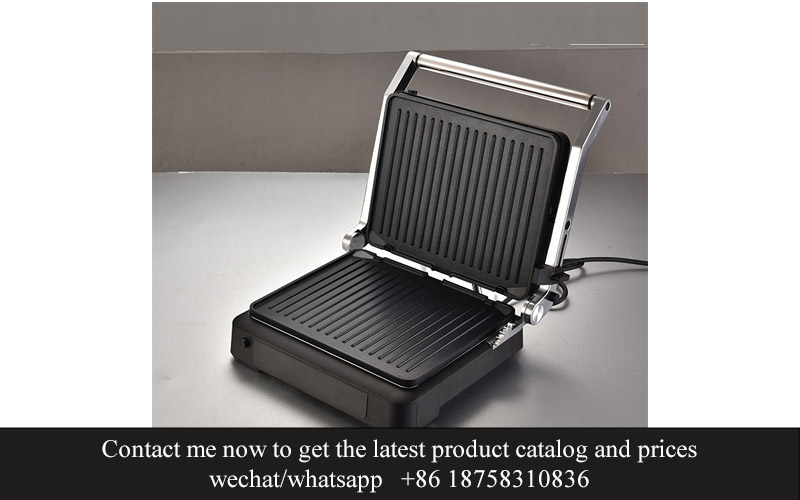
In the competitive world of grill manufacturing, efficiency is key to staying ahead. In-house mold making plays a pivotal role in enhancing production processes, leading to several significant benefits. Here’s how this approach impacts the production side:
Mold making is an art form that requires precision and expertise. By keeping mold design and production in-house, grill brands can ensure that the molds are tailored to their specific needs, allowing for a seamless production process. This customization reduces the need for multiple mold revisions, which can be time-consuming and costly when sourced externally.
The integration of in-house mold making allows for a faster turnaround time. When molds are designed and manufactured within the same facility, there’s no need to wait for external suppliers to meet deadlines. This agility in production means that grill brands can respond quickly to market demands and adjust their production schedules with ease.
Quality control is another area where in-house mold making shines. When a brand has full control over the mold-making process, they can closely monitor the quality of the molds throughout their creation. This vigilance ensures that the molds are accurate, robust, and capable of producing consistent and high-quality grill parts.
The efficiency of in-house mold making also extends to maintenance and repairs. With external mold suppliers, there’s always a risk of downtime due to issues with mold maintenance or repair. By having the capability to make their own molds, grill brands can address any issues promptly, minimizing production delays.
One of the most substantial benefits of in-house mold making is the ability to experiment with new materials and designs. Grill manufacturers can test different materials for durability, heat resistance, and aesthetics without the constraints of working with pre-existing molds. This innovation can lead to unique grill designs that stand out in the market.
The efficiency edge doesn’t stop at design and material experimentation. In-house mold making can also streamline the production process through the use of advanced techniques and technologies. For example, mold designers can incorporate 3D printing for rapid prototyping, allowing for quick iterations and improvements before moving to full-scale production.
Efficiency is also about cost-effectiveness. By reducing dependency on external suppliers, grill brands can negotiate better prices for raw materials and mold components. This cost savings can be passed on to the consumer, offering competitive pricing without compromising on quality.
Moreover, in-house mold making fosters a culture of continuous improvement within the organization. Employees involved in mold design and production can collaborate closely, sharing insights and ideas that lead to more efficient production methods. This collaborative environment can result in the development of proprietary technologies and processes that give the brand a competitive edge.
The efficiency gained through in-house mold making also has a ripple effect on the supply chain. Grill manufacturers can better manage inventory, ensuring that they have the right parts at the right time. This just-in-time approach minimizes waste and reduces the storage costs associated with excess inventory.
In the realm of sustainability, in-house mold making can be a game-changer. By reducing the need for transportation of molds between different locations, grill brands can cut down on carbon emissions and contribute to a greener production process. Additionally, the ability to quickly produce replacement parts or modify existing designs can extend the lifespan of products, aligning with today’s environmental concerns.
In conclusion, the efficiency edge provided by in-house mold making is multifaceted. It enhances production speed, improves quality control, fosters innovation, and offers cost savings. These benefits collectively contribute to a stronger competitive position in the grill manufacturing industry.
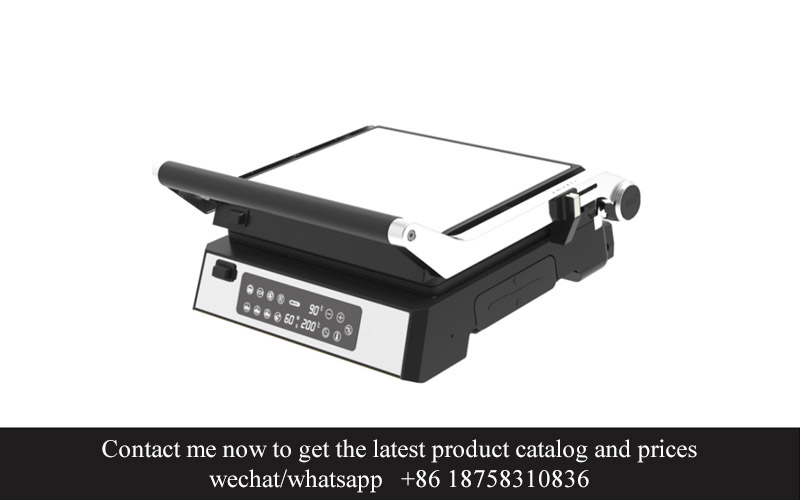
In the competitive world of grill manufacturing, the quality of the parts is paramount. Ensuring that every component meets the highest standards is crucial for maintaining a brand’s reputation and customer satisfaction. Here’s how strict quality control and consistency play a pivotal role in producing top-notch grill parts.
Mold-making precision is the cornerstone of consistent part quality. Every mold used in the manufacturing process must be meticulously crafted to ensure that the parts it produces are uniform and fit perfectly. This level of detail requires advanced technology and a deep understanding of the materials used, such as stainless steel, aluminum, or cast iron.
The meticulous inspection of raw materials is a non-negotiable step in the quality control process. Suppliers are vetted carefully to ensure that the metals and plastics used are of the highest grade. Regular testing of these materials for purity, durability, and resistance to heat and corrosion is conducted to prevent any issues that could compromise the final product.
Throughout the manufacturing process, parts are continuously monitored. Automated systems can quickly identify deviations from the desired specifications, allowing for immediate corrective actions. This real-time monitoring not only catches defects early but also prevents them from becoming a recurring issue in the production line.
Customized quality checks are tailored to the specific needs of each grill model. Different grills require different components, and their performance under heat, pressure, and use varies. This means that quality control protocols must be flexible and adaptable to ensure that each part meets the exacting standards required for its intended use.
Skilled technicians are on hand to manually inspect parts that the automated systems flag as potentially problematic. Their eyes and hands are trained to spot even the smallest imperfections that could affect the longevity or performance of the grill. This human element adds an extra layer of assurance that the parts are up to the task.
Regular audits and certifications are another critical aspect of maintaining high-quality grill parts. These audits are conducted by independent bodies to verify that the manufacturing processes are compliant with industry standards. Certifications like ISO 9001 demonstrate a company’s commitment to quality and continuous improvement.
Consistency in design and manufacturing is achieved through the use of specialized tools and machinery. High-precision cutting and forming machines ensure that parts are cut to the exact dimensions required, with minimal waste. This not only improves efficiency but also ensures that the parts fit together seamlessly.
In the realm of grill parts, the smallest detail can make a significant difference. For instance, the thickness of metal sheets in grill grates affects their durability and resistance to warping. Ensuring that these sheets are precisely cut and uniformly thick is essential for a grill that can withstand years of use.
The quality of welds and finishes cannot be overstated. Grills are subjected to extreme conditions, and weak welds or uneven finishes can lead to leaks or rust. By using skilled welders and applying a high-quality finish, manufacturers can guarantee that the grill parts are not only functional but also aesthetically pleasing.
The final stage of quality control involves rigorous testing under simulated real-world conditions. Parts are subjected to heat, humidity, and physical stress to ensure they perform as expected. This testing helps to identify any potential weaknesses or failures before the grill reaches the consumer.
In conclusion, the relentless pursuit of quality control and consistency in grill parts manufacturing is what sets top-tier brands apart. It’s through these meticulous processes that manufacturers can confidently offer products that are not just durable but also embody the brand’s commitment to excellence. By focusing on every aspect of production, from raw materials to the final product, grill brands can ensure that their customers receive top-notch parts that make for a perfect grilling experience.

In the competitive landscape of the grill manufacturing industry, achieving cost-effectiveness while maintaining a competitive edge is a delicate balance. Here’s how in-house mold making plays a pivotal role in this financial tightrope walk:
The Advantages of In-House Mold Making
Mold making in-house allows brands to have complete control over the design and production process. This control translates into savings on external mold manufacturing costs and the flexibility to modify molds quickly without relying on external suppliers. By eliminating the need for third-party mold production, grill brands can ensure that their unique product specifications are met precisely, which is not always the case with external suppliers.
Streamlined Supply Chain and Reduced Lead Times
When molds are made in-house, the supply chain becomes more direct and efficient. The elimination of intermediaries reduces lead times, allowing brands to respond swiftly to market demands. This agility is crucial in the grill industry, where trends can shift rapidly, and being able to adjust production quickly can be the difference between market leadership and falling behind.
Cost Savings Through Long-Term Investment
Investing in in-house mold making capabilities might seem like a significant upfront expense, but it’s an investment that pays off over time. By producing molds internally, brands can reduce the costs associated with mold rental or purchase from external suppliers. This long-term cost savings can be reinvested into product innovation, marketing, or even into further enhancing the in-house mold making capabilities.
Enhanced Product Quality
The quality of the grill parts is paramount in ensuring customer satisfaction and brand reputation. In-house mold making allows for rigorous quality control throughout the process. Molds can be fine-tuned to produce parts with the highest level of precision, which results in better fitting and more durable grill components. This focus on quality can differentiate a brand in a crowded market.
Competitive Pricing Strategy
Pricing is a key factor in the grill industry. Brands that can produce high-quality parts with in-house molds often have a competitive edge when it comes to pricing. By cutting down on production costs and eliminating the markup that comes with using external mold suppliers, brands can offer their products at more attractive price points without compromising on quality.
Customization Without Compromise
In the grill market, customization is often a selling point. In-house mold making enables brands to offer a wide range of customized grill options to cater to specific customer needs. Whether it’s a unique design, a specific size, or an unusual material, the ability to create molds tailored to these requirements can set a brand apart and justify a premium price.
Building Stronger Customer Relationships
Cost-effectiveness and competitive advantage are not just about winning the market battle; they’re also about building strong relationships with customers. By providing high-quality, well-priced, and customizable grills, brands can foster loyalty and create a reputation for reliability. This, in turn, can lead to repeat business and positive word-of-mouth referrals.
Long-Term Strategic Planning
In-house mold making is not just about immediate cost savings or competitive positioning; it’s also about strategic planning for the future. As the grill industry evolves, having the ability to quickly adapt and produce new products or parts is crucial. Brands with in-house mold making capabilities can respond to market changes more effectively and stay ahead of the competition.
Conclusion
The cost-effectiveness and competitive advantage achieved through in-house mold making in the grill industry are multifaceted. From streamlining the supply chain and enhancing product quality to enabling customization without compromise, the benefits are clear. By investing in this capability, grill brands can not only reduce costs but also build a solid foundation for long-term growth and market leadership.
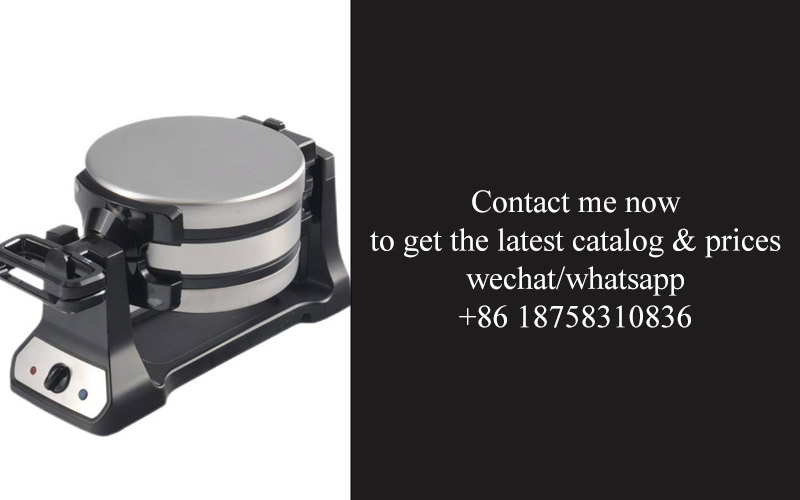
In the world of grill manufacturing, there are brands that have found remarkable success by embracing in-house mold making. These companies have reaped the benefits of greater control over their product design, production quality, and cost management. Let’s delve into a few case studies that highlight the success stories of brands that have taken this strategic approach.
1. Brand A: The Revolution in Grill DesignBrand A, a relatively new entrant in the grill market, decided to invest in in-house mold making capabilities. This move allowed the company to bring its innovative designs to life with precision and speed. By designing and producing their molds internally, Brand A was able to experiment with various designs without the constraints of external suppliers. This resulted in a range of grills that stood out for their unique features and aesthetics, capturing the attention of consumers and industry experts alike.
2. Brand B: Streamlining Production for Higher OutputBrand B, a well-established grill manufacturer, faced challenges in meeting the growing demand for its products. By establishing an in-house mold-making department, the company could produce molds in-house, reducing lead times and the dependency on external suppliers. This not only allowed for increased production volume but also ensured that the quality of the grill parts remained consistent. The streamlined process enabled Brand B to scale up production without compromising on the integrity of its products.
3. Brand C: Customization at ScaleBrand C, known for its custom grills, had previously struggled to offer a high level of customization while maintaining production efficiency. With in-house mold making, the brand could now create custom molds for specific orders, ensuring that each grill was tailored to the customer’s needs. This level of customization, previously only available to high-end customers, became more accessible, leading to increased customer satisfaction and loyalty. The brand’s reputation for quality and personalized service grew exponentially.
4. Brand D: Reducing Dependency on External SuppliersBrand D had been relying on multiple external suppliers for its grill components, which led to a complex supply chain and potential disruptions. By bringing mold making in-house, the brand was able to centralize its manufacturing process. This not only minimized the risk of supply chain delays but also provided a direct line of communication between the design team and the production floor. The brand’s ability to respond quickly to market demands and customer feedback became a significant competitive advantage.
5. Brand E: Cost Reduction and Profit MarginsFor Brand E, the transition to in-house mold making was a strategic move aimed at reducing costs. By eliminating the need to purchase molds from external sources and controlling the entire production process, the brand saw significant savings. These cost reductions were then passed on to the consumers, making Brand E’s grills more affordable without compromising on quality. The increase in sales volume and the enhanced profit margins solidified the brand’s position as a market leader.
6. Brand F: The Art of Quality ControlBrand F recognized that quality control was paramount in the grill industry. By managing the mold-making process internally, the brand could ensure that every aspect of its grill components was to the highest standard. This focus on quality has not only resulted in fewer defective products but has also improved the overall lifespan and customer satisfaction of the grills. The brand’s commitment to quality has been a cornerstone of its success and a key differentiator in a competitive market.
7. Brand G: Navigating the Global MarketBrand G, with a presence in several international markets, found that in-house mold making helped it navigate the complexities of global trade. By producing molds domestically, the brand could reduce shipping costs and avoid potential customs issues. This flexibility allowed Brand G to respond more quickly to changes in global demand and regulatory requirements, maintaining its competitive edge on a global scale.
These case studies demonstrate how brands across the grill manufacturing sector have benefited from embracing in-house mold making. By gaining control over design, production, and quality, these companies have not only enhanced their competitive positions but have also created value for their customers and stakeholders. The stories of these brands serve as inspiration for others looking to innovate and succeed in the grill industry.
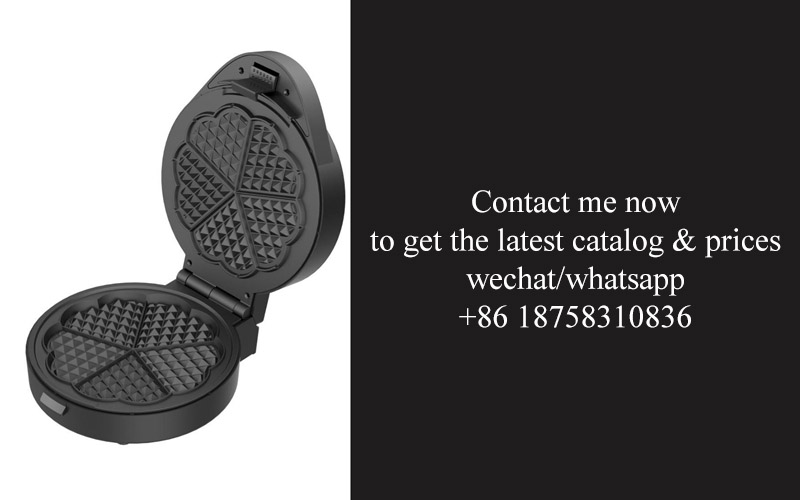
In the ever-evolving grill industry, staying ahead of the curve is crucial. The role of in-house mold making has become a pivotal factor in shaping the direction of this sector. As we delve into the future, it’s clear that this practice will play a significant part in the grill industry’s evolution. Here’s how:
The demand for customization in the grill market is on the rise. Consumers are no longer satisfied with one-size-fits-all products. They seek unique designs that cater to their specific needs and preferences. In-house mold making allows brands to respond to this demand swiftly and efficiently. By having their molds created and maintained in-house, companies can quickly iterate on designs, making adjustments to fit customer feedback and market trends.
The grill industry is also seeing an increase in the use of advanced materials. Aluminum, stainless steel, and even composites are being utilized more frequently to create durable and high-performance grills. In-house mold making facilitates the production of complex and intricate parts that are necessary for these innovative designs. It ensures that the molds are precisely tailored to the materials used, resulting in parts that are both functional and aesthetically pleasing.
Another key trend is the integration of smart technology into grills. Smart grills can offer features like remote control, temperature monitoring, and even predictive maintenance. In-house mold making supports the production of these advanced components, as it allows for the creation of intricate electronics enclosures and precise sensor mounts. This integration not only enhances the user experience but also opens up new revenue streams for grill manufacturers.
In the realm of sustainability, in-house mold making is also making a significant impact. As more consumers become environmentally conscious, the demand for eco-friendly products is growing. By manufacturing molds in-house, brands can reduce their carbon footprint by eliminating the need for transportation and reducing waste. This approach also allows for the use of sustainable materials, further reinforcing a company’s green credentials.
The ability to produce custom molds in-house also leads to better quality control. When a manufacturer controls the entire process, from design to production, they can ensure that every aspect of the mold and, consequently, the grill parts, meets the highest standards. This level of oversight is crucial in preventing defects and inconsistencies that can occur when parts are produced by third-party suppliers.
The evolution of the grill industry is also being driven by globalization. Brands that once catered to local markets are now competing on a global scale. In-house mold making enables these companies to adapt to diverse regional requirements with relative ease. Whether it’s creating a mold for a unique design or modifying an existing one to meet specific regulatory standards, in-house capabilities offer the agility needed to thrive in a global marketplace.
The use of in-house mold making is also closely linked to the rise of 3D printing technology. While traditional molding methods are still essential for large-scale production, 3D printing allows for rapid prototyping and the production of complex geometries that were once impossible. By combining these two techniques, grill manufacturers can bring new and innovative products to market faster than ever before.
The success stories of brands embracing in-house mold making are numerous. For instance, a well-known grill manufacturer that transitioned to in-house mold making reported a significant reduction in lead times and an increase in product quality. This shift allowed them to respond more quickly to market demands and win over new customers.
As the grill industry continues to evolve, the role of in-house mold making is becoming increasingly important. It’s not just about the ability to create custom molds; it’s about the strategic advantage it provides. Companies that invest in their own mold-making capabilities can expect to see improvements in product development, production efficiency, quality control, and customer satisfaction.
In conclusion, the future of the grill industry is closely tied to the capabilities of in-house mold making. As the industry continues to innovate and adapt to changing consumer preferences, those companies that leverage this technology will be well-positioned to lead the charge. Whether it’s through custom designs, advanced materials, smart technology, sustainability, or global competition, in-house mold making will be a key driver in shaping the grill industry of tomorrow.
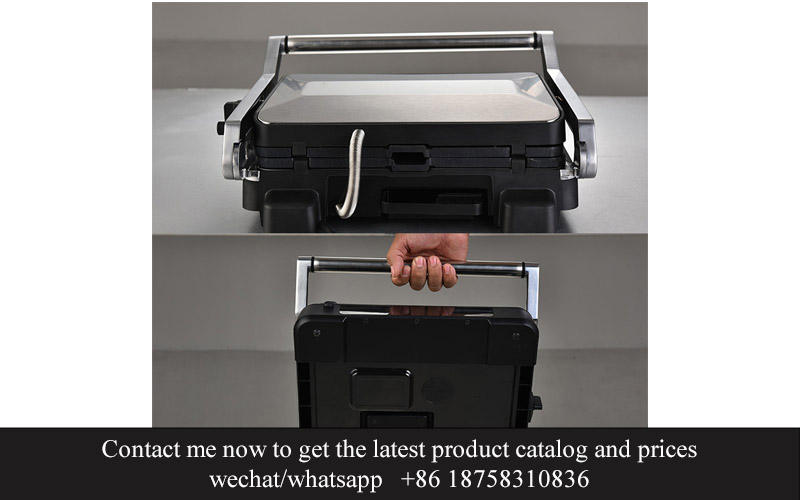
The evolution of grill manufacturing has been marked by continuous innovation and efficiency improvements. One key factor that has emerged as a game-changer is the integration of in-house mold making. This practice not only enhances the quality of grill parts but also offers numerous strategic advantages. In this conclusion, we delve into the invaluable role of in-house mold making in modern grill production, highlighting its impact on cost-effectiveness, competitive edge, and the broader industry evolution.
In-house mold making has become a cornerstone for grill brands looking to differentiate themselves in a crowded market. By crafting molds internally, companies gain complete control over the design and production process, ensuring that each component meets the highest standards. This control extends beyond just the quality of the parts; it also influences the brand’s ability to offer unique, customizable designs that resonate with consumers.
As grill manufacturers focus on innovation, the precision and flexibility of in-house mold making play a pivotal role. The ability to rapidly prototype and iterate on designs means that companies can bring new products to market more quickly, staying ahead of trends and consumer demands. This agility is not just about being first; it’s about being able to respond to the ever-changing landscape of the grill industry with tailored solutions.
One significant benefit of in-house mold making is the direct impact on quality control. When manufacturers produce their own molds, they can maintain a tight lid on the production process, ensuring that every grill part is consistent in design and performance. This level of control minimizes defects and enhances the overall durability of the grill, which is crucial for maintaining a brand’s reputation and customer satisfaction.
The cost-effectiveness of in-house mold making cannot be overstated. While initially, setting up an in-house mold-making facility might involve significant investment, the long-term savings are substantial. By reducing reliance on external suppliers, companies can avoid the costs associated with outsourcing, such as transportation, customs duties, and potential quality issues. Moreover, in-house mold making allows for economies of scale, as the same molds can be used repeatedly without the need for frequent replacements or adjustments.
In the realm of competitive advantage, in-house mold making has become a strategic asset. Grill brands that invest in their own mold-making capabilities can offer a wider range of products with shorter lead times. This not only caters to the demands of a dynamic market but also positions the brand as a leader in innovation and responsiveness. The ability to produce custom molds also means that brands can cater to niche markets or special-order requirements, further solidifying their market presence.
Looking at case studies of brands that have embraced in-house mold making, we see a pattern of success. Companies like Weber and Char-Broil have leveraged this approach to create highly durable and versatile grill products. Their commitment to in-house mold making has allowed them to maintain a high standard of quality while also offering a variety of grill designs to meet different consumer needs.
As we look to the future, the role of in-house mold making in the grill industry’s evolution is set to become even more significant. With the rise of smart grills and the integration of advanced technology, the need for precision and customization is more critical than ever. In-house mold making will enable grill manufacturers to produce complex parts with intricate designs, driving the development of new features and functionalities that consumers crave.
In conclusion, the invaluable role of in-house mold making in modern grill production is multifaceted. It drives innovation, ensures quality control, enhances cost-effectiveness, and provides a competitive edge. As the grill industry continues to evolve, the ability to control the mold-making process will be a key factor in determining which brands rise to the top. The brands that embrace this approach will not only survive but thrive in the dynamic and competitive landscape of grill manufacturing.